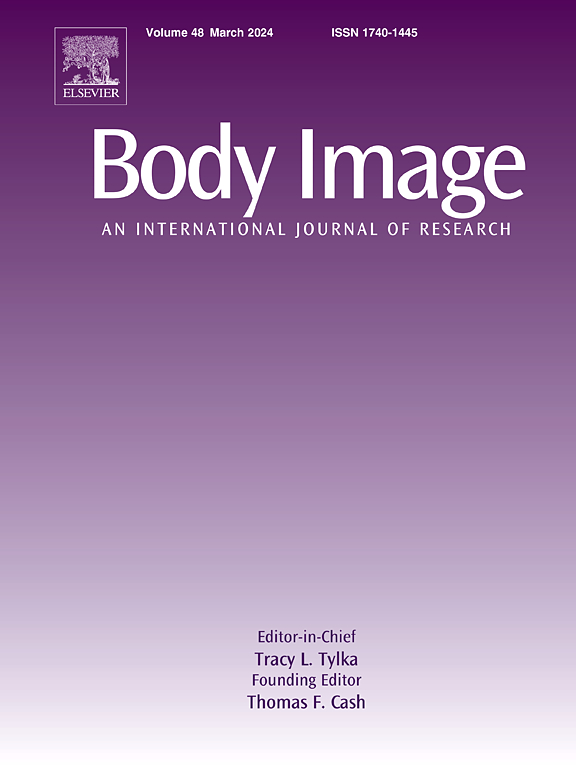在感染和未感染艾滋病毒的妇女中,与体重和体型有关的耻辱:一项定性研究。
IF 5.4
1区 心理学
Q1 PSYCHIATRY
引用次数: 0
摘要
包括体重增加和内脏肥胖在内的身体变化在感染艾滋病毒的女性中很普遍,这可能会带来体重歧视的风险——对一个人的负面态度、信仰和判断与他们的体型有关。我们进行了一项定性调查,以描述体重耻辱的经历,并比较和对比感染艾滋病毒和未感染艾滋病毒的妇女的经历。参与者是从MS杰克逊的妇女跨机构艾滋病毒研究站点招募的;亚拉巴马州伯明翰市;并被邀请参加一个单独的电话采访。访谈由研究小组的两名成员进行转录和编码,并使用演绎和归纳主题分析进行分析。28名妇女完成了访谈,其中19名(68% %)为HIV+;26例(95 %)为黑色;身体尺寸范围由BMI近似(范围:19-40+)。女性将社区体重耻辱感描述为与性别、种族、艾滋病毒状况和年龄有关。制定的体重歧视普遍存在,有多种来源,与被认为太瘦或太大有关。预期和内化的体重耻辱感是体型较大的女性所关注的问题,而不是体型较小的女性。感染艾滋病毒的女性表示担心腹部脂肪堆积会暴露她们的艾滋病毒感染状况。总体而言,无论艾滋病毒状况如何,体重耻辱都是女性的共同经历。感染艾滋病毒的妇女面临体重和身体变化的风险,有可能受到歧视。在解决感染艾滋病毒的妇女与体重有关的健康问题的任何努力中,都必须考虑到与体型和艾滋病毒有关的交叉耻辱。本文章由计算机程序翻译,如有差异,请以英文原文为准。
Stigma related to weight and body size among women living with and living without HIV: A qualitative study
Body changes including weight gain and visceral adiposity are prevalent among women living with HIV and may pose risks for weight stigma–negative attitudes, beliefs, and judgments about a person related to their body size. We undertook a qualitative investigation to describe experiences of weight stigma and to compare and contrast those experiences among women living with and living without HIV. Participants were recruited from Women’s Interagency HIV Study sites in Jackson, MS; Birmingham, AL; and Atlanta GA and invited to participate in an individual phone interview. Interviews were transcribed, coded by two members of the research team, and analyzed using deductive and inductive thematic analysis. Twenty-eight women completed interviews of whom 19 (68 %) were HIV+; 26 (95 %) were Black; with a range of body sizes approximated by BMI (range: 19–40+). Women described community weight stigma as it related to gender, race, HIV status, and age. Enacted weight stigma was pervasive, came from multiple sources, and related to being perceived as too thin or too big. Anticipated and internalized weight stigma were concerns described by women with larger bodies, but not smaller bodies. Women living with HIV expressed worries about abdominal fat accumulation revealing their HIV status. Overall, weight stigma was a common experience among women regardless of HIV status. Women living with HIV are at risk for weight and body changes, introducing opportunities for stigma. Consideration of intersectional stigma related to body size and HIV must be given in any efforts to address weight-related health among women living with HIV.
求助全文
通过发布文献求助,成功后即可免费获取论文全文。
去求助
来源期刊

Body Image
Multiple-
CiteScore
8.70
自引率
28.80%
发文量
174
期刊介绍:
Body Image is an international, peer-reviewed journal that publishes high-quality, scientific articles on body image and human physical appearance. Body Image is a multi-faceted concept that refers to persons perceptions and attitudes about their own body, particularly but not exclusively its appearance. The journal invites contributions from a broad range of disciplines-psychological science, other social and behavioral sciences, and medical and health sciences. The journal publishes original research articles, brief research reports, theoretical and review papers, and science-based practitioner reports of interest. Dissertation abstracts are also published online, and the journal gives an annual award for the best doctoral dissertation in this field.
 求助内容:
求助内容: 应助结果提醒方式:
应助结果提醒方式:


